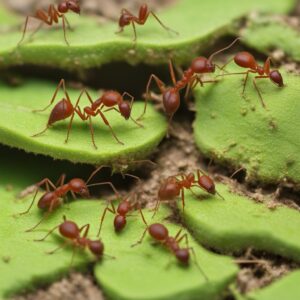Unveiling the Fascinating World of Philodendron: The Green Marvel
Philodendrons are popular houseplants known for their lush foliage and easy-care nature. These versatile plants belong to the Araceae family and are native to the tropical regions of the Americas. With a wide variety of species and hybrids available, philodendrons come in different shapes, sizes, and colors, making them a favorite choice for indoor plant enthusiasts. One of the most common types is the heartleaf philodendron (Philodendron hederaceum), characterized by its heart-shaped leaves and trailing vines.
Another popular variety is the split-leaf philodendron (Philodendron selloum), with its large, deeply lobed leaves that create a dramatic tropical look. Philodendrons are relatively low-maintenance plants, requiring moderate sunlight, regular watering, and occasional fertilization. They thrive in well-draining soil and benefit from occasional misting to increase humidity levels. With proper care, philodendrons can grow rapidly and become a stunning focal point in any living space. Whether you’re a beginner or experienced plant parent, philodendrons are a fantastic addition to your indoor garden, bringing beauty and tropical vibes into your home.This philodendron is great for hanging baskets or climbing on trellises, adding a touch of greenery to any room..
The Philodendron Guide: Lush Greenery for Any Space
The Philodendron Guide is a comprehensive resource for plant enthusiasts looking to add lush greenery to any space. Philodendrons are versatile, easy-to-care-for plants that come in a variety of species, making them a popular choice for both beginners and experienced gardeners. This guide covers everything from selecting the right philodendron species for your space to proper care and propagation techniques. With their attractive foliage and air-purifying qualities, philodendrons are a great addition to homes, offices, and indoor spaces. They thrive in a range of lighting conditions and can be easily maintained with minimal effort. The Philodendron Guide provides tips on watering, lighting, fertilizing, and troubleshooting common issues that may arise. Whether you’re looking to spruce up your living room, office desk, or bathroom with some vibrant greenery, The Philodendron Guide has all the information you need to create a thriving indoor jungle.
The Beauty and Benefits of Philodendron: A Must-Have Houseplant for Health and Happiness
Philodendron plants are popular houseplants known for their beauty and numerous benefits, making them a must-have for any indoor garden. With their lush green foliage and versatile growth habits, Philodendrons add a touch of elegance to any space while also improving indoor air quality. One of the key benefits of Philodendrons is their ability to purify the air by removing toxins such as formaldehyde and benzene, creating a healthier living environment. These plants are low maintenance and can thrive in various light conditions, making them perfect for beginners and experienced gardeners alike. Philodendrons also have a positive impact on mental health, as their presence can help reduce stress and anxiety. Studies have shown that being around plants, such as Philodendrons, can improve mood and increase feelings of well-being. In addition to their health benefits, Philodendrons are easy to propagate, making it simple to grow your collection or share with friends. With their graceful appearance and multiple benefits, Philodendrons are indeed a must-have houseplant for health and happiness.
Philodendron Varieties: A Guide to Common Cultivars
| Feature | Description |
|---|---|
| Botanical Name | Philodendron |
| Common Names | Heartleaf Philodendron, Selloum, Monstera |
| Origin | Tropical regions of the Americas |
| Growth Habit | Climbing or trailing |
| Light Needs | Indirect sunlight |
| Watering Needs | Allow soil to partially dry between waterings |
| Care | Easy to care for, tolerant of neglect |
FAQ
Sure! Here is a FAQ section about philodendron plants:

Q: What is a philodendron plant?
A: Philodendrons are popular and easy-to-grow houseplants known for their glossy green leaves and attractive vine-like growth habit.
Q: How often should I water my philodendron?
A: Water your philodendron when the top inch of soil feels dry to the touch. It’s important not to overwater as this can lead to root rot.
Q: How much sunlight does a philodendron need?
A: Philodendrons prefer bright, indirect sunlight but can also adapt to lower light conditions. Avoid placing them in direct sunlight as it can scorch their leaves.
Q: How do I propagate my philodendron?
A: Philodendrons can be propagated through stem cuttings. Simply cut a 4-6 inch section of a healthy stem with a leaf node, place it in water or soil, and roots will eventually grow.
Q: What are common pests that affect philodendron plants?
A: Common pests that may affect philodendrons include spider mites, mealybugs, and aphids. Regularly inspect your plant for any signs of pest infestation.
Q: How often should I fertilize my philodendron?
A: Fertilize your philodendron with a balanced houseplant fertilizer once a month during the growing season (spring and summer). Reduce fertilization during the fall and winter months.
Q: Can I place my philodendron outdoors during the summer?
A: Yes, philodendrons can be placed outdoors during the summer months as long as they are protected from direct sunlight and extreme temperatures.
Q: Why are the leaves of my philodendron turning yellow?
A: Yellowing leaves on a philodendron can be a sign of overwatering, underwatering, improper light conditions, or nutrient deficiencies. Try to identify the cause and adjust your care routine accordingly.
Q: How big do philodendron plants grow?
A: The size of philodendron plants can vary depending on the species and growing conditions. Some varieties stay small and compact, while others can grow several feet tall and wide.
I hope you find these FAQs helpful! If you have any other questions about philodendrons or plants in general, feel free to ask.
- Cat Palm vs Majesty Palm: Which Should You Choose? - June 30, 2024
- Flowers That Survive Winter: Discover the Exceptional No. 5 - June 30, 2024
- The Ultimate Guide to the Growth and Care of the Black Pagoda Lipstick Plant - June 29, 2024





